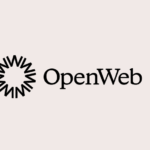What do Xbox, Audi, and OnlyFans have in common?
They are just a few examples of how the subscription model has taken off across industries.
Publishers like the New York Times, Washington Post, and Forbes have all embraced the subscription model too—and some, like the Atlantic, have managed to grow an impressive subscriber base in a short period of time.
And while COVID-19 has accelerated the growth of subscriptions across industries, it’s no fleeting trend: publishers have continued to see subscriber growth with minimal churn over the past year.
Now, not every publisher needs paid subscriptions. Ad revenue isn’t going anywhere—nor should it. But building a community willing to pay is no small task: there are some valuable lessons here on how to build a loyal and committed community that all publishers can learn from.
At the top of the list? Registered and subscribed users are a valuable source of first-party data. Many publishers are also using the subscription model to achieve sustainability, retention, and increase the LTV of their users.
Since it doesn’t appear that the subscription model is going away any time soon, publishers should be aware of why it’s expanded so rapidly, and what this could mean for your business.
In this post, I’ll examine why the subscription economy has blown up over the past year and what all Publishers – even those who will always remain ad-supported – can learn to help drive registrations, returning users, and greater sustainability.
What can publishers learn from the subscription model?
According to eMarketer, subscriptions are one of the biggest digital trends of 2021. More industries are leveraging subscriptions because it’s a powerful way to take advantage of notable shifts in consumer buying habits. For instance, a recent report from Zuora revealed that people increasingly favor experiences and services over physical products.
Content upgrades, as well as access to premium and exclusive content are some of the top reasons why users hit the subscribe button on a publisher’s website.
Remember, it’s all about value: registered and subscribed users are your biggest fans, and they will keep coming back over time, allowing publishers to drive loyalty and increase user LTV. And since these users also tend to be more engaged, the subscription model helps create stronger relationships between the publisher and the reader.
Why is this crucial for publishers to know? Readers who sign up to become a part of your community are a valuable source of first-party data—an absolute necessity in the forthcoming cookieless world. First-party data delivers insights that help better align the right advertisers with your users, and even helps inform editorial decisions with data like trending topics and overall engagement.
Readers who sign up also have a sense of belonging in the community, so it’s no surprise that they are the most loyal users who return frequently and spend more time on-site.
So, it’s easy to see why leading publishers have embraced the subscription model. But you may be thinking, “I’m not the New York Times. How would this work for my business?”
The subscription model isn’t for all publishers—but driving readers to sign up is important
Paid subscriptions may not make sense for every publisher, and that’s more than OK. But encouraging your readers to sign up and become a part of your community is non-negotiable. Not only do you get valuable first-party data; registered, engaged users keep coming back to your website again and again. How can publishers successfully drive more sign-ups? The very first step is a conversation.
How OpenWeb helps publishers convert readers
According to Digiday, 63% of publishers say turning audiences into paying subscribers is a key challenge. Fortunately, OpenWeb has a few ways to help publishers encourage users to sign up— in fact, we helped one news publisher grow registrations by 196%.
OpenWeb does this by assessing behavior in real-time to predict a user’s next step and giving them incentives to sign up. Our conversation platform is designed to drive users to subscribe: using a combination of reward mechanisms like reputation points and carefully placed calls-to-action, we make it easy for people to get involved in conversations, stay on-site longer, and become registered users. To learn more about how OpenWeb helps publishers move users through the loyalty funnel, read our post.
The subscription economy is here to stay
You don’t need to be the New York Times to find success with the subscription model: there is a lot that publishers who will always stay ad-supported can learn. Even if paid subscriptions aren’t part of your future plan, driving registrations should be. Learn more about how OpenWeb can help drive loyalty and conversions.


